Beef Ribs Overview Vs Pork Ribs Overview
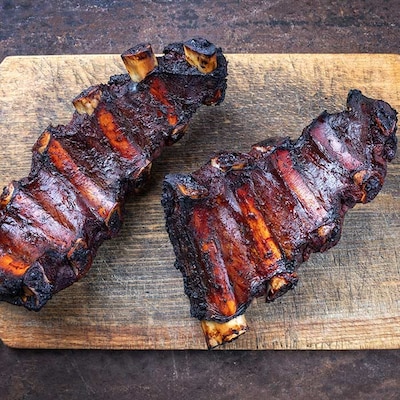
Beef ribs and pork ribs are both popular choices in the world of barbecue. Beef ribs are known for their hearty and robust flavor, with meat that is rich and succulent. They are larger and denser, making them ideal for slow cooking and smoking. On the other hand, pork ribs are known for their tenderness and juiciness. They have a sweeter flavor profile and the meat easily falls off the bone. Pork ribs are often grilled or braised to perfection. Whether you prefer the boldness of beef ribs or the tender goodness of pork ribs, both options deliver a mouthwatering barbecue experience.
Beef Ribs: Taste, Texture, And Cooking Methods
Beef ribs are renowned for their bold and robust flavor, making them a favorite among meat lovers. The meat is rich and succulent, with a hearty texture that can be melt-in-your-mouth tender when cooked properly. Beef ribs are larger and denser compared to pork ribs, which makes them ideal for slow cooking and smoking. This allows the flavors to develop and the meat to become tender and juicy. Whether braised, smoked, or grilled, beef ribs offer a satisfying and flavorful barbecue experience that is sure to impress. So fire up the grill and get ready for a mouthwatering beef rib feast! (83 words)
Pork Ribs: Flavor Profile, Tenderness, And Cooking Techniques
Pork ribs, particularly baby back ribs and spare ribs, are known for their delicious flavor profile and tenderness. The meat of pork ribs is succulent and juicy, with a slightly sweeter taste compared to beef ribs. The fat content in pork ribs adds richness and enhances the overall flavor. When cooked properly, pork ribs can be incredibly tender, with the meat easily falling off the bone. Cooking techniques for pork ribs include grilling, smoking, and braising. Grilling gives the ribs a nice char and smoky flavor, while braising helps to retain moisture and create tender meat. Whether you prefer a sweet and tangy barbecue sauce or a spicy dry rub, pork ribs can be seasoned and cooked in a variety of ways to suit your taste preferences. So fire up the grill or smoker and get ready to indulge in some lip-smacking pork ribs!
Beef Ribs Nutrition Vs Pork Ribs Nutrition
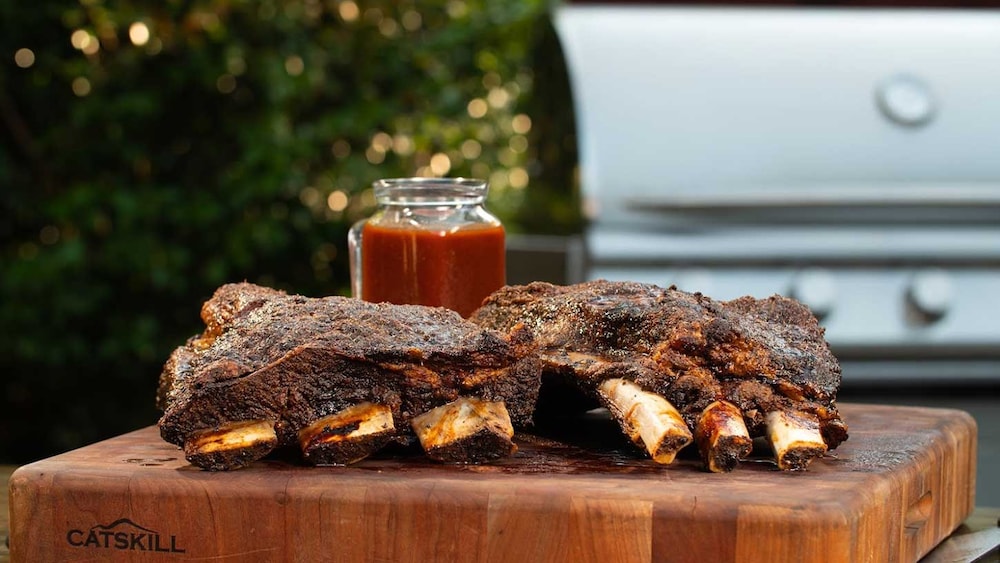
When it comes to nutrition, both beef ribs and pork ribs offer their unique benefits. Beef ribs tend to have higher protein content, making them a great choice for muscle building and repair. On the other hand, pork ribs are slightly higher in fat, which can add richness and flavor to the meat. It’s important to note that the fat content in pork ribs can be reduced by trimming excess fat before cooking. Ultimately, the choice between beef and pork ribs depends on personal dietary preferences and health considerations.
Beef Ribs: Protein Content, Fat Levels, And Mineral Composition
Beef ribs are a protein-packed option for meat lovers. They tend to have a higher protein content compared to pork ribs, making them a great choice for those looking to build and repair muscles. Additionally, beef ribs typically have slightly higher fat levels, which can contribute to their rich and flavorful taste. In terms of mineral composition, beef ribs are a good source of essential minerals like iron and zinc. These minerals play important roles in maintaining overall health and promoting proper bodily functions.
Source: Livestrong
Pork Ribs: Nutritional Value, Calories, And Health Considerations
Pork ribs offer a significant nutritional value, packed with essential nutrients. In terms of calories, three ounces of pork ribs contain approximately 250 calories. While they are higher in cholesterol compared to beef ribs, with 75mg per serving, they also provide important minerals like iron and zinc. However, it’s important to note that consuming pork ribs in moderation is recommended, considering their higher fat content. Opting for lean cuts and trimming excess fat can help reduce saturated fat intake and make them a healthier choice.
Beef Ribs Preparation And Seasoning Vs Pork Ribs Preparation And Seasoning
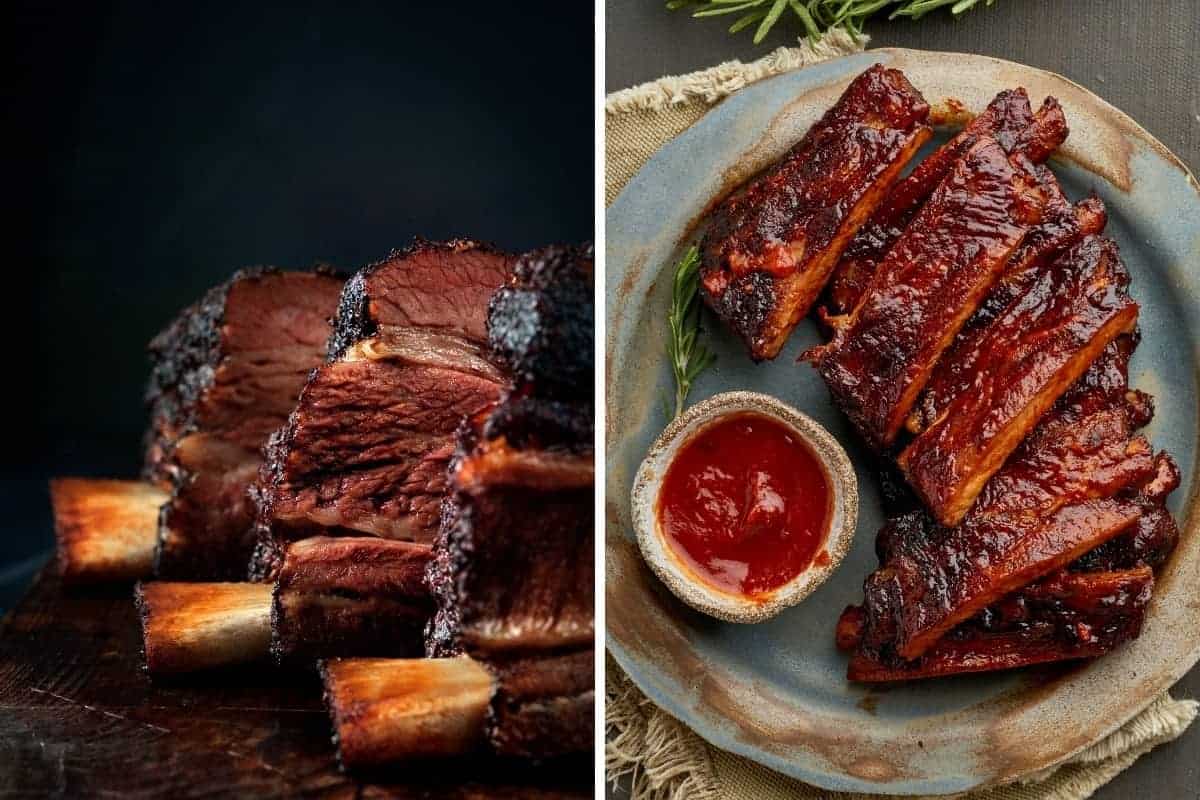
When it comes to preparing and seasoning beef ribs, marinating is often the way to go. Beef ribs benefit from soaking in a flavorful marinade overnight, allowing the meat to absorb the flavors and tenderize. Popular marinades for beef ribs include a combination of soy sauce, Worcestershire sauce, garlic, and spices like paprika and black pepper. On the other hand, pork ribs are more commonly seasoned with dry rubs. These rubs can be made with a variety of herbs and spices, such as brown sugar, chili powder, cumin, and garlic powder, enhancing the natural sweetness of the pork. Whether marinating or using dry rubs, both beef and pork ribs can be cooked to perfection on the grill or in the oven, resulting in a delicious barbecue experience.
Beef Ribs: Marinating Tips, Rubs, And Smoking Recommendations
When it comes to beef ribs, marinating is key to infusing them with delicious flavors and ensuring they stay tender and juicy during cooking. For marinating, it’s recommended to use a combination of soy sauce, Worcestershire sauce, garlic, and spices like paprika and black pepper. Allow the beef ribs to soak in the marinade overnight to let the flavors penetrate the meat. Another popular option is using dry rubs. Create a rub using a mix of herbs and spices like brown sugar, chili powder, cumin, and garlic powder. This will add a delightful crust and enhance the natural flavors of the beef. Lastly, smoking the beef ribs adds a smoky depth to the flavor. Use hardwood chips like hickory or mesquite to complement the beefy taste.
Pork Ribs: Sauce Options, Dry Rubs, And Grilling Methods
When it comes to pork ribs, there are various sauce options, dry rubs, and grilling methods to enhance their flavor. One popular sauce option is barbecue sauce, which comes in different flavors like sweet, tangy, or spicy. You can also explore other sauce varieties like honey mustard, teriyaki, or Carolina-style vinegar-based sauces. For dry rubs, you can create a mixture of spices such as brown sugar, paprika, chili powder, garlic powder, and salt, which adds a rich and savory flavor to the ribs. When it comes to grilling methods, you can use either direct heat or indirect heat. Direct heat grilling involves cooking the ribs directly over the flame, while indirect heat grilling involves placing the ribs away from the flame and cooking them slowly at a lower temperature. Both methods result in deliciously grilled pork ribs.
Beef Ribs Vs Pork Ribs Cooking Methods
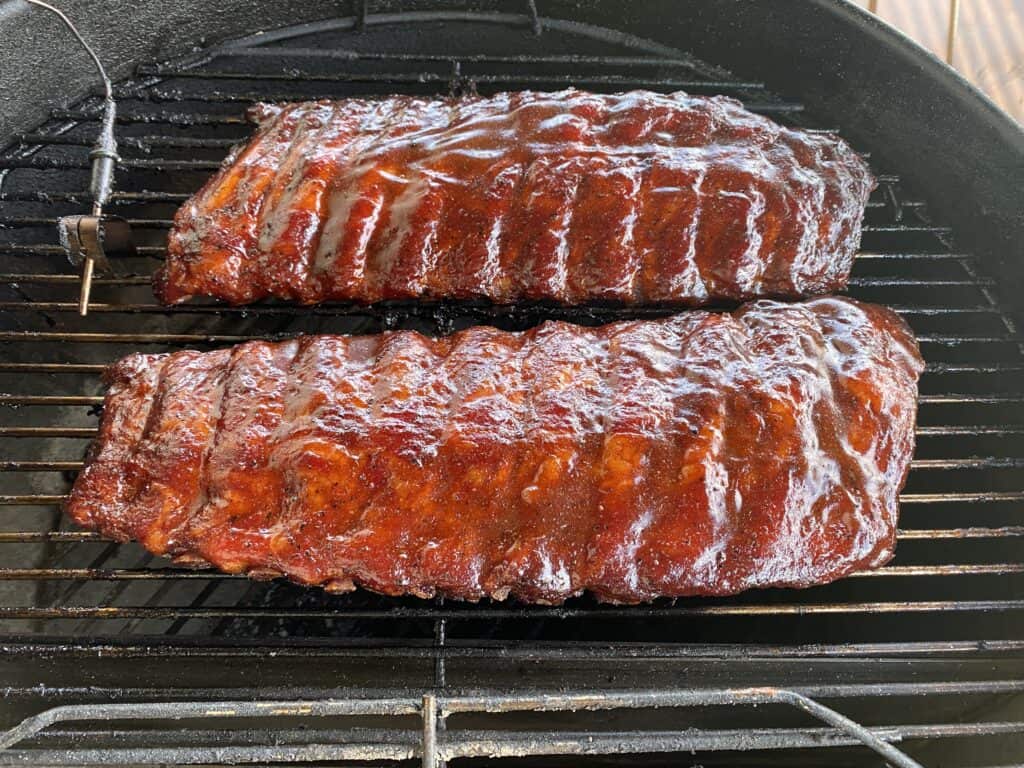
Beef ribs and pork ribs can be cooked using different methods to achieve the best results.
For beef ribs, slow cooking is the preferred method. This allows the meat to become tender and flavorful. Smoking the beef ribs over low heat for several hours creates a smoky and rich taste. Temperature control is crucial to ensure the meat is cooked evenly and reaches the desired level of doneness.
On the other hand, pork ribs are often grilled. This method imparts a delicious charred flavor and caramelizes the sauce. Grilling pork ribs over direct heat gives them a nice crust while keeping the inside tender and juicy. Braising is another popular method, where the ribs are cooked in liquid at a low temperature for a longer period, resulting in a melt-in-your-mouth texture.
Ultimately, the cooking method you choose for beef or pork ribs will depend on your personal preference and the flavors you want to achieve. So, fire up the grill or prepare the smoker, and get ready to enjoy a mouthwatering feast of beef or pork ribs.
Beef Ribs: Slow Cooking, Smoking, And Temperature Control
Beef ribs are best cooked using the slow cooking method, which allows the meat to become tender and flavorful. This can be achieved by smoking the beef ribs over low heat for several hours. Temperature control is crucial during the cooking process to ensure that the meat is cooked evenly and reaches the desired level of doneness. By taking your time and patiently cooking the beef ribs at a low temperature, you can achieve a smoky and rich taste that will have meat lovers coming back for more. So, fire up the smoker and get ready to enjoy some mouthwatering beef ribs.
Pork Ribs: Grilling, Braising, And Finishing Techniques
When it comes to cooking pork ribs, grilling is a popular and classic method that brings out the smoky flavors of the meat. Preheat your grill to medium heat and place the ribs directly on the grate. Cook them for about 30 minutes on each side, brushing with your favorite sauce for added flavor.
Braising is another technique that can result in tender and juicy pork ribs. Start by searing the ribs in a hot skillet to brown them. Then, transfer them to a pot or slow cooker and cover them with a flavorful liquid, such as broth or barbecue sauce. Cook them on low heat for several hours until they become tender.
For the finishing touch, many people like to glaze their pork ribs with a sweet and tangy sauce. Brush the sauce on the ribs during the last few minutes of grilling or broiling to give them a beautiful caramelized coating.
No matter which technique you choose, remember to let the ribs rest for a few minutes after cooking to allow the juices to redistribute. This will result in a more flavorful and succulent eating experience.
Beef Ribs Taste Test Vs Pork Ribs Taste Test
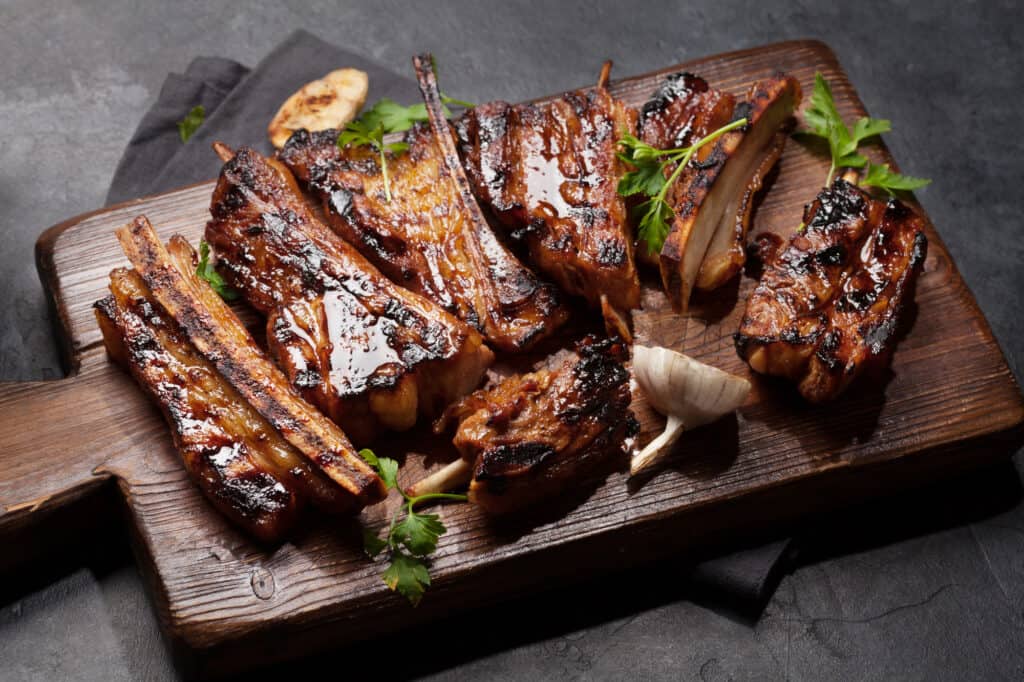
When it comes to the taste test between beef ribs and pork ribs, it’s all about personal preference. Beef ribs have a rich, hearty flavor with a slightly gamey undertone. They have a chewier texture and a strong beefy taste that meat lovers adore. On the other hand, pork ribs offer a milder and sweeter flavor. They have a tender and juicy meat that easily falls off the bone. Pork ribs are known for their succulence and the way they effortlessly melt in your mouth. Whether you prefer the robustness of beef ribs or the tender sweetness of pork ribs, both options are sure to satisfy your barbecue cravings.
Beef Ribs: Flavor Profile, Tenderness Evaluation, And Popular Serving Styles
Beef ribs have a distinct flavor profile that meat lovers can’t resist. The rich, hearty taste of beef shines through in each bite, with a slightly gamey undertone that adds depth to the overall flavor.
Tenderness is a key factor when it comes to evaluating beef ribs. The meat should be tender and juicy, but with a little bit of chewiness. The fat marbling in beef ribs adds to their tenderness and provides a melt-in-your-mouth texture.
When it comes to serving styles, beef ribs are often enjoyed just as they are, with a simple salt and pepper seasoning to enhance the natural flavors. They are commonly served with barbecue sauce on the side for dipping or basting. Some popular serving styles include slow-cooked BBQ beef ribs, Korean-style kalbi ribs, or smoked beef ribs with a dry rub for a robust flavor experience.
Beef ribs are a true delight for meat enthusiasts looking for a hearty and flavorful barbecue experience.
Pork Ribs: Taste Preferences, Sauce Pairing, And Cultural Variations
When it comes to taste preferences, pork ribs have a slightly sweeter and milder flavor compared to beef ribs. This makes them particularly appealing to those who enjoy a more subtle taste. Pork ribs pair well with various types of sauces, including tangy barbecue sauce, sweet and smoky flavors, or even spicy marinades. Different cultural variations also influence the preparation and seasoning of pork ribs. For example, in American barbecue culture, pork ribs are often coated with a thick, sticky sauce, while Asian cuisines like Chinese or Korean tend to marinate them in savory and soy-based sauces. Whether you prefer a classic barbecue flavor or want to explore global tastes, pork ribs offer a versatile and delicious dining experience.
Conclusion
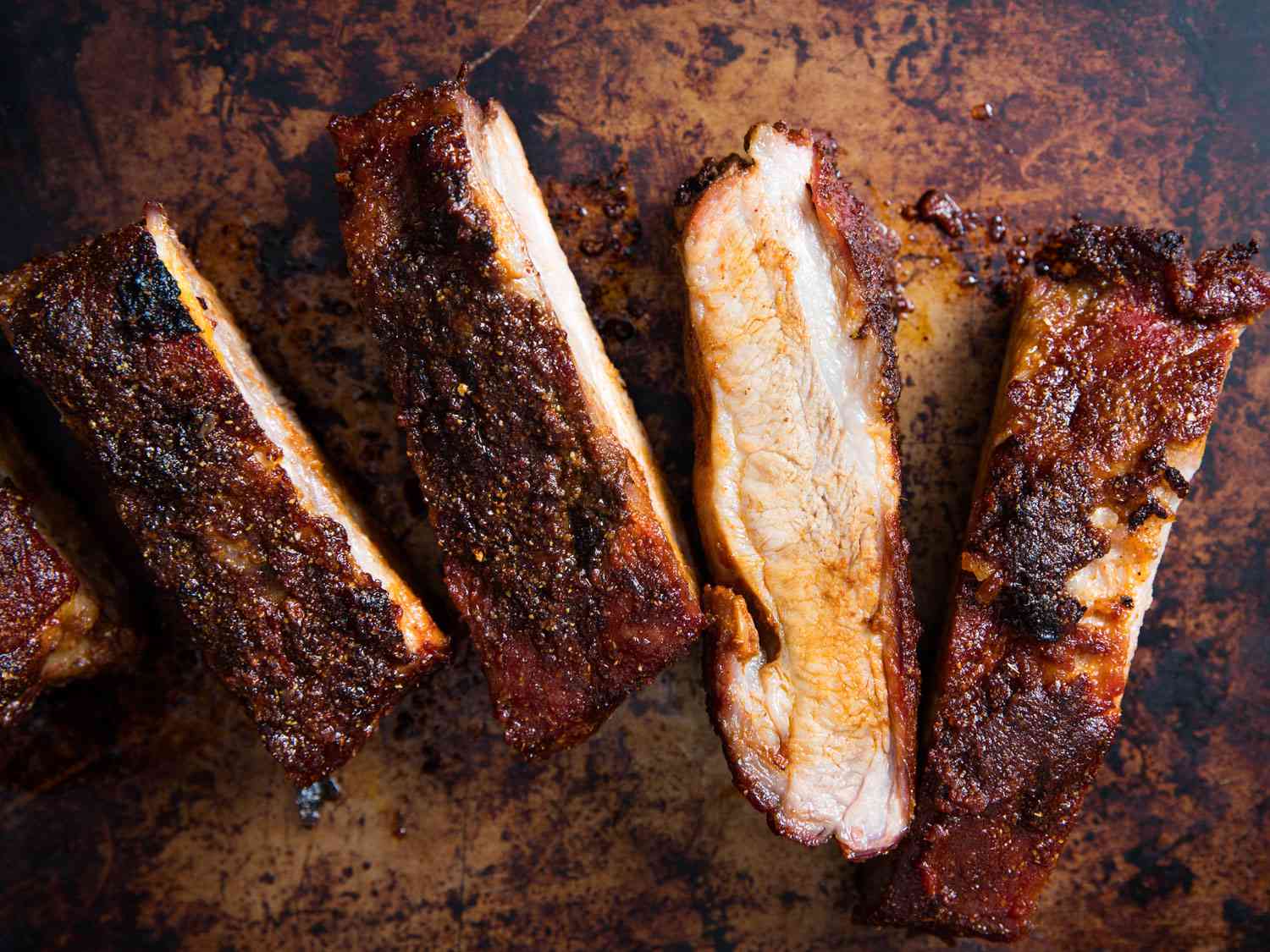
In conclusion, the battle between beef and pork ribs in the world of barbecue is a tough one. Both cuts offer distinct flavor profiles, tenderness levels, and cooking techniques. Beef ribs are known for their meatiness and require slow cooking methods like smoking, while pork ribs are prized for their tenderness and versatility in grilling and braising. It ultimately comes down to personal preference and what you are looking for in your barbecue experience. So, grab some ribs, experiment with different seasonings and sauces, and find the perfect match for your taste buds. Happy grilling!
Comparison Between Beef Ribs And Pork Ribs For BBQ Enthusiasts
BBQ enthusiasts are often torn between beef ribs and pork ribs, both offering their own unique qualities. Beef ribs are known for their meaty and robust flavor, making them a favorite among those who enjoy a hearty meal. On the other hand, pork ribs are prized for their tenderness, juiciness, and ability to easily absorb flavors. When it comes to cooking methods, beef ribs shine in low and slow smoking, while pork ribs excel in grilling and braising. Ultimately, the choice between beef and pork ribs comes down to personal preference and desired flavor profile. Try both to discover your ultimate BBQ favorite.
Tips For Choosing The Best Ribs For Your Barbecue Feast.
When it comes to choosing the best ribs for your barbecue feast, there are a few key factors to consider. First, decide whether you prefer beef or pork ribs based on your personal taste preferences. Then, look for ribs that have a good meat-to-bone ratio, indicating a meaty cut. Additionally, check for marbling in the meat, as this will add flavor and tenderness. Finally, consider the thickness of the ribs – thicker ribs tend to be more flavorful and juicy. By considering these tips, you can ensure that you select the best ribs to create a mouthwatering barbecue feast.
FAQ About Beef Vs Pork Ribs: Barbecue Battle For Meat Lovers
Q: What are the main differences between beef ribs and pork ribs?
A: Beef ribs come from cattle, are larger, and have a richer beef flavor. Pork ribs are from pigs, smaller in size, and have a slightly sweeter taste.
Q: Which ribs are more tender: beef or pork?
A: Pork ribs are generally considered more tender and easier to cook compared to beef ribs, which can be tougher and take longer to become tender.
Q: Do beef ribs and pork ribs require different cooking methods?
A: Yes, beef ribs and pork ribs require different cooking techniques due to their distinct flavors and textures. Beef ribs often benefit from low and slow cooking, while pork ribs can be cooked faster at higher temperatures.
Q: Which type of ribs is more popular in barbecue competitions?
A: Pork ribs are more commonly used in barbecue competitions due to their tenderness and versatility in flavors, making them a favorite among meat lovers and judges alike.
Q: Are beef ribs more expensive than pork ribs?
A: Yes, beef ribs are usually more expensive than pork ribs due to the higher cost of beef compared to pork. However, both can be enjoyed as delicious barbecue options depending on personal preferences and budget.

Duke City Kitchen, known for its fresh, simple, and delicious cuisine, has a rich history deeply rooted in the heart of the local food scene. Since its inception, Duke City Kitchen has been dedicated to providing an exceptional dining experience that celebrates the region’s flavors. Founded by a passionate group of food enthusiasts, Duke City Kitchen opened its doors with the vision of offering a welcoming space where people could gather to enjoy thoughtfully prepared meals made from the finest, locally sourced ingredients. This commitment to quality and community has been a driving force behind Duke City Kitchen’s success.